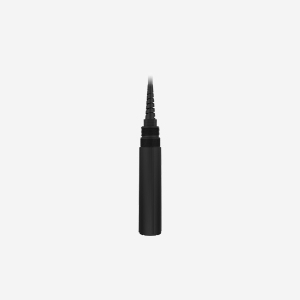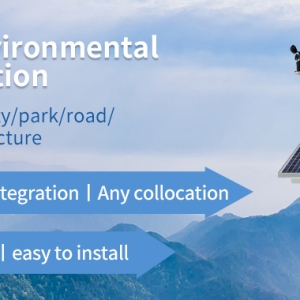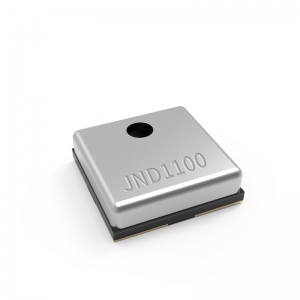Precision farming, also known as precision agriculture or smart farming, has emerged as a transformative approach to crop production. It leverages advanced technologies such as soil sensors, GPS, drones, and data analytics to optimize farming practices, maximize yield, and minimize resource waste. Among these technologies, soil sensors play a crucial role in providing real-time data on soil conditions, enabling farmers to make informed decisions about irrigation, fertilization, and crop management. This article explores the significance of soil sensor innovation in precision farming and its impact on yield maximization and resource efficiency.

Understanding Soil Sensors:
Soil sensors are electronic devices that measure various parameters related to soil health and condition, such as moisture content, temperature, pH level, nutrient levels, and salinity. They are designed to interact with the soil and provide accurate and timely data that can guide farmers in making informed decisions. Soil sensors typically consist of a sensing element that interacts with the soil, a transducer that converts the detected signal into an electrical output, and a data logger or communication module to transmit the data for analysis.
Benefits of Soil Sensors in Precision Farming:
Precise Irrigation Management: Soil sensors enable farmers to optimize irrigation practices by providing real-time data on soil moisture levels. By measuring the moisture content at different soil depths, farmers can determine the water requirements of crops more accurately. This helps avoid over-irrigation or under-irrigation, leading to improved water-use efficiency and reduced water waste. Additionally, precise irrigation management reduces the risk of water stress or waterlogging, which can have detrimental effects on crop yield.
Nutrient Optimization:
Soil sensors help farmers optimize nutrient management by providing insights into the nutrient composition and availability in the soil. By monitoring nutrient levels, farmers can adjust their fertilizer application rates and timing according to the specific needs of crops. This prevents nutrient deficiencies or excesses, improving nutrient uptake by plants and reducing fertilizer waste. Optimal nutrient management leads to healthier plants, improved crop quality, and higher yield.
Enhanced Disease and Pest Management:
Soil sensors contribute to early detection and management of diseases and pests by monitoring soil conditions. Changes in soil moisture, temperature, and other parameters can indicate the presence of disease-causing organisms or pest infestations. By receiving timely alerts from soil sensors, farmers can implement preventive measures such as targeted pesticide application or crop rotation to control the spread of diseases and pests. This reduces dependence on broad-spectrum pesticides and promotes environmentally friendly pest management practices.
Site-Specific Crop Management:
Soil sensors enable site-specific crop management by providing detailed information about soil variability within fields. By mapping soil properties such as pH, salinity, and organic matter content, farmers can identify areas with specific needs and tailor their management practices accordingly. For example, crops that thrive in acidic soils can be planted in areas with lower pH levels, while crops that require higher nutrient levels can be allocated to areas with richer soil. Site-specific crop management optimizes resource allocation and improves overall yield and productivity.
Data-Driven Decision Making:
Soil sensors generate a wealth of data that can be analyzed to gain insights into soil health, crop growth patterns, and environmental conditions. By analyzing this data, farmers can make data-driven decisions about irrigation scheduling, nutrient management, and other farming practices. Data analytics, coupled with advanced algorithms and machine learning techniques, can provide valuable recommendations for optimal crop management and resource utilization. This improves decision-making efficiency and enables farmers to achieve maximum yield potential.
Innovations in Soil Sensor Technology:
Wireless and IoT-enabled Sensors: Traditional soil sensors required physical connections for data transmission, limiting their scalability and flexibility. However, advancements in wireless communication technologies and the Internet of Things (IoT) have led to the development of wireless soil sensors that can transmit data wirelessly over long distances. These sensors can be easily deployed across large fields and integrated into IoT platforms for real-time monitoring and analysis.
Improved Sensor Accuracy and Durability:
Accuracy and durability are crucial factors in soil sensor performance. Innovations in sensor technology have led to improved accuracy in measuring soil parameters such as moisture, temperature, and nutrient levels. Additionally, advancements in material science and sensor design have enhanced the durability and longevity of soil sensors, allowing them to withstand harsh environmental conditions and long-term use in the field.
Integrated Sensor Networks:
To address the issue of soil variability within fields, researchers and companies are developing integrated sensor networks that enable higher-resolution soil mapping. Multiple sensors placed strategically within a field can collect data at different locations, depths, and time intervals. By combining and analyzing this data, farmers can create detailed soil maps that identify areas with specific needs and optimize management practices accordingly.
Sensor Fusion and Integration:
Sensor fusion involves combining data from multiple sensors to gain a more comprehensive understanding of soil conditions. For example, integrating data from soil moisture sensors, temperature sensors, and weather stations can provide insights into the interactions between soil moisture, evapotranspiration rates, and atmospheric conditions. This integrated approach improves the accuracy and reliability of soil data and enables more precise decision-making.
Remote Sensing and Satellite Imagery:
Advancements in remote sensing technologies and satellite imagery have enabled the monitoring of large-scale agricultural areas. Soil sensors can be integrated with remote sensing platforms to provide a broader perspective on soil conditions. By combining ground-based sensor data with satellite imagery, farmers can assess soil variability over large areas, identify potential yield-limiting factors, and implement targeted interventions.
Challenges and Future Directions:
Despite the significant advancements in soil sensor technology, several challenges remain:
Cost and Accessibility:
The cost of soil sensors can be a barrier to widespread adoption, particularly for small-scale farmers or those in developing regions. Efforts are underway to develop more affordable sensor solutions that cater to the diverse needs of different farming systems and economic contexts.
Calibration and Maintenance:
Soil sensors require regular calibration and maintenance to ensure accurate and reliable measurements. Calibration protocols need to be standardized, and farmers need to receive proper training on sensor installation, calibration, and maintenance to maximize their benefits.
Data Management and Integration:
Managing and analyzing large volumes of data generated by soil sensors can be challenging. Data management systems and analytics tools need to be developed to handle the influx of data and provide actionable insights in a user-friendly manner. Integration with existing farm management software platforms is also crucial for seamless data utilization.
Standardization and Compatibility:
Standardization of soil sensor technologies, data formats, and communication protocols is essential to promote interoperability among different sensor brands and facilitate data sharing and integration. This allows farmers to choose the most suitable sensors for their specific needs and ensures compatibility with other precision farming technologies.
Conclusion:

土壤传感器通过提供有关土壤状况的实时数据,使农民能够优化他们的做法并最大限度地提高产量,同时最大限度地减少资源浪费,从而彻底改变精准农业。通过精确的灌溉管理、养分优化、加强病虫害管理、特定地点的作物管理和数据驱动的决策,土壤传感器有助于实现可持续和高效的农业实践。土壤传感器技术的持续创新,加上努力应对与成本、校准、数据管理和标准化相关的挑战,将进一步提高全球精准农业的采用和影响。通过利用土壤传感器创新的力量,农民可以实现更高的作物产量、更高的资源效率和更可持续的农业未来。






